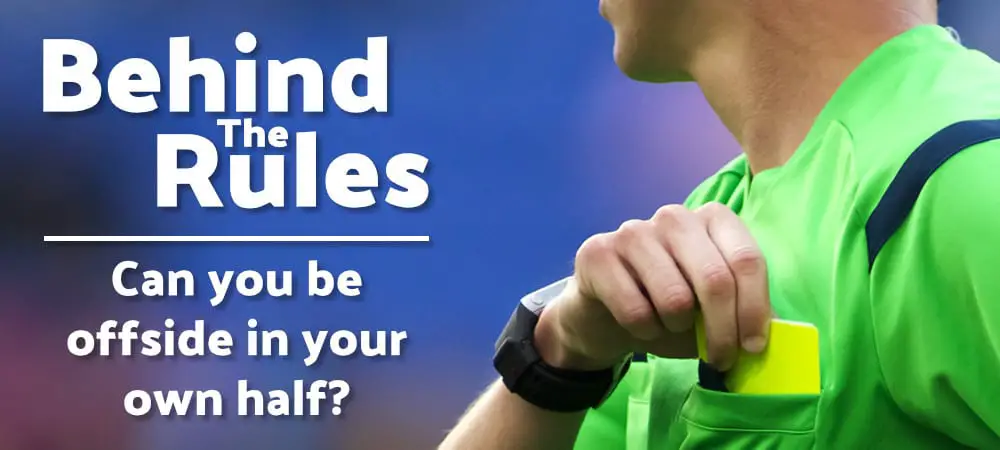Disclaimer: some of the links on this page are affiliate links. We will make a small commission on purchases made through them at no cost to you.
If you don’t know the ins and outs of the offside rule, there can be times when you’re sure a player is offside but the referee doesn’t blow his whistle. For example, when a player appears to be clearly offside but he’s in his own half.
So, can you be offside in your own half? If the player receiving the ball is in his own half when the pass is made, he cannot be offside. However, if he was in an offside position in the opponent’s half when the pass is made but returns to his own half to reveive the ball, he is offside.
In the rest of this article we’ll take a look at what the official rule states, when you can be offside in your own half, and how this detail of the offside rule affects how the game is played.
What does the official rule state?
The official rule states:
A player is in an offside position if:https://www.thefa.com/football-rules-governance/lawsandrules/laws/football-11-11/law-11—offside
- any part of the head, body or feet is in the opponents’ half (excluding the halfway line) and
- any part of the head, body or feet is nearer to the opponents’ goal line than both the ball and the second-last opponent
Note that the offside rule comes into play the moment the pass is made, not when the ball is received.
You CAN be offside if the pass was made when the recieving player STARTED in opponents’ half
If a player is in an offside position just over the half way line in the opponents’ half when the pass is made and comes back into his own half to receive the ball, it is considered offside.
This is similar to how it is possible for a player to be offside from a backwards pass.
Read more: Can you be offside from a backwards pass?
Like always with the offside rule, it is the moment the ball is played that counts, not the moment the player reveives the ball.
How this rule affects the game
Defenders have to be very careful when their team is in possesion and attacking, especially against counter-attacking teams.
In the modern game, a lot of teams like to use a high line to condense the area of play making it difficult for the opposition to keep posession of the ball.
However, this can be risky.
If a team uses a high defensive line and pushes their defenders too far up the pitch leaving no one in their own half, a cunning striker can exploit this by making a run behind the defenders without the risk of being caught offside. This gives them a huge head start and leaves them in a one-v-one situation with the keeper and a great opportunity to score.
Thanks for reading!
